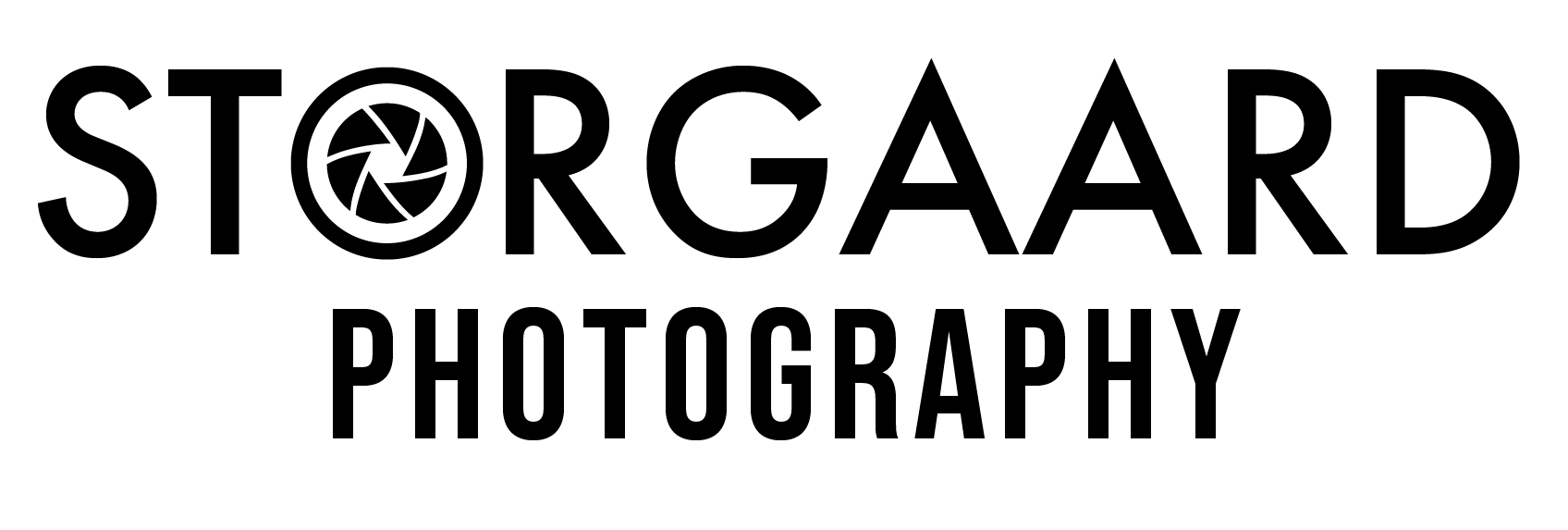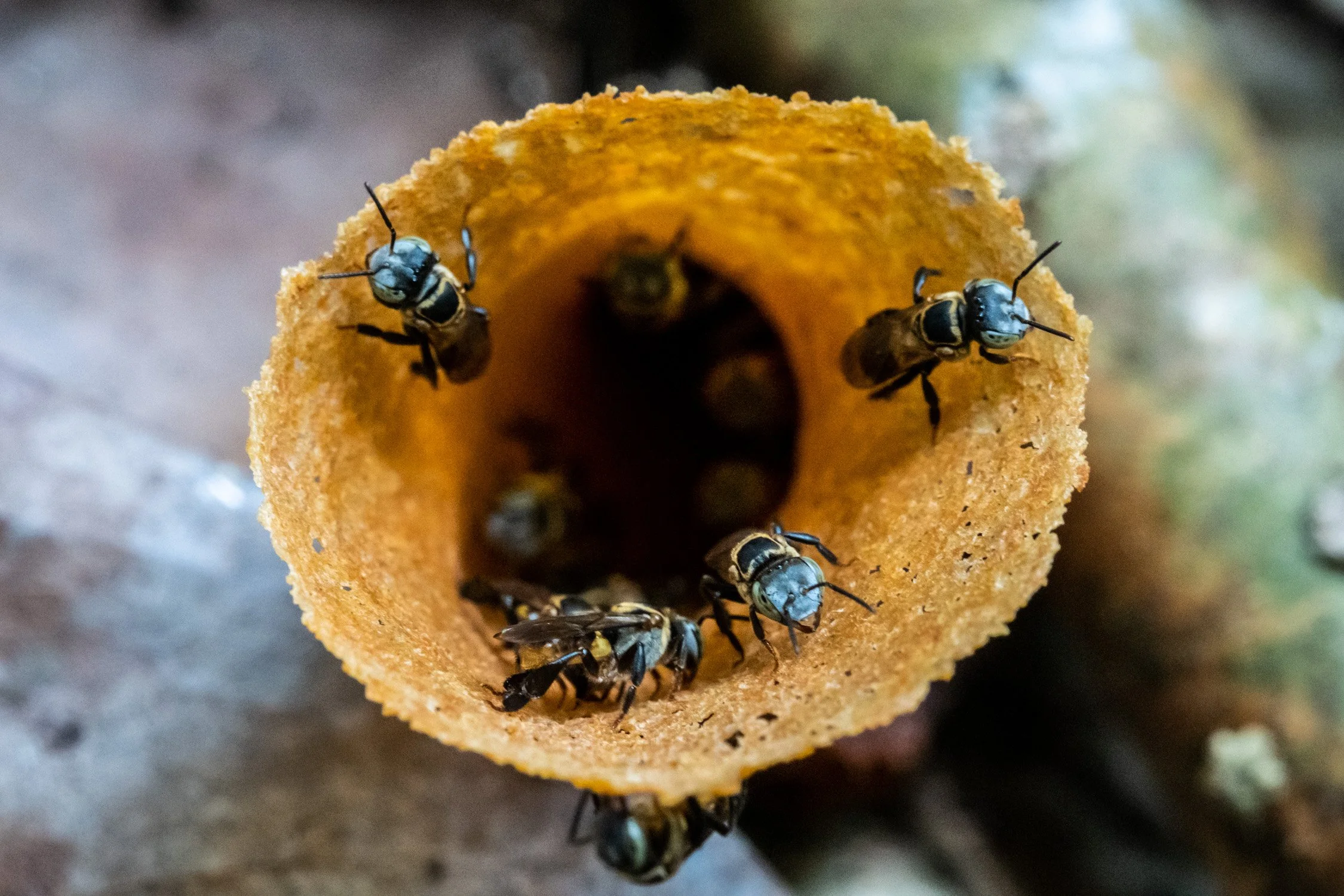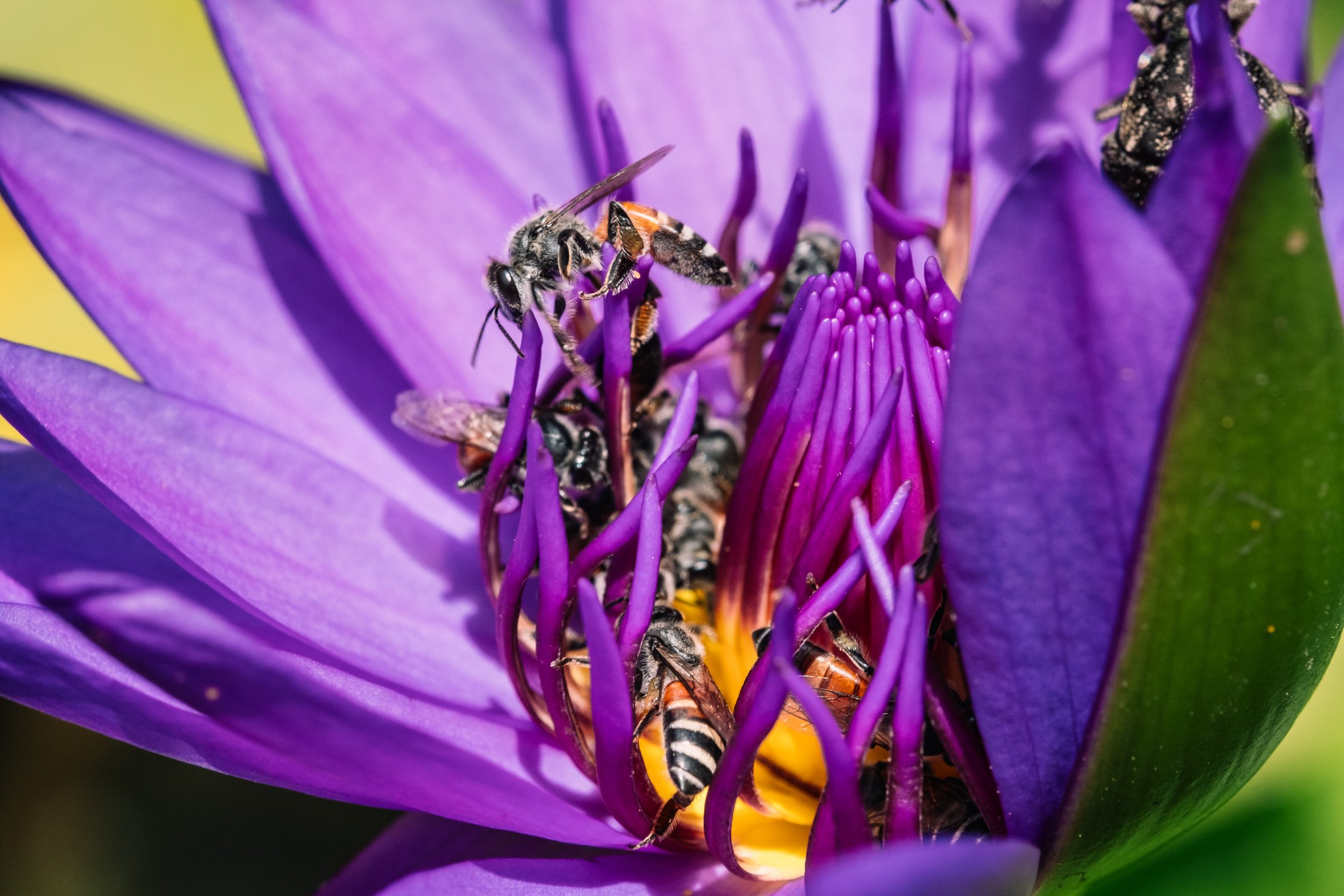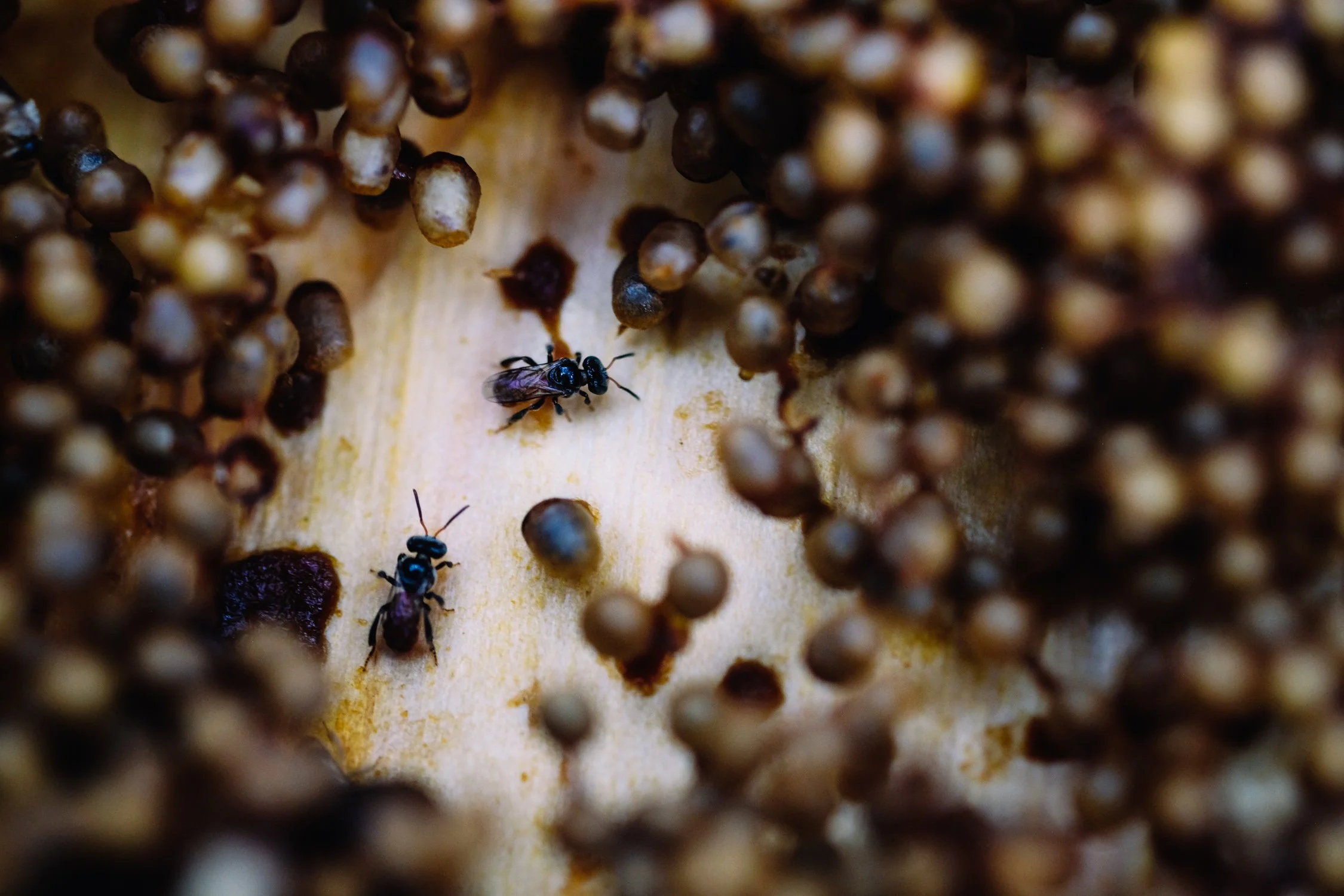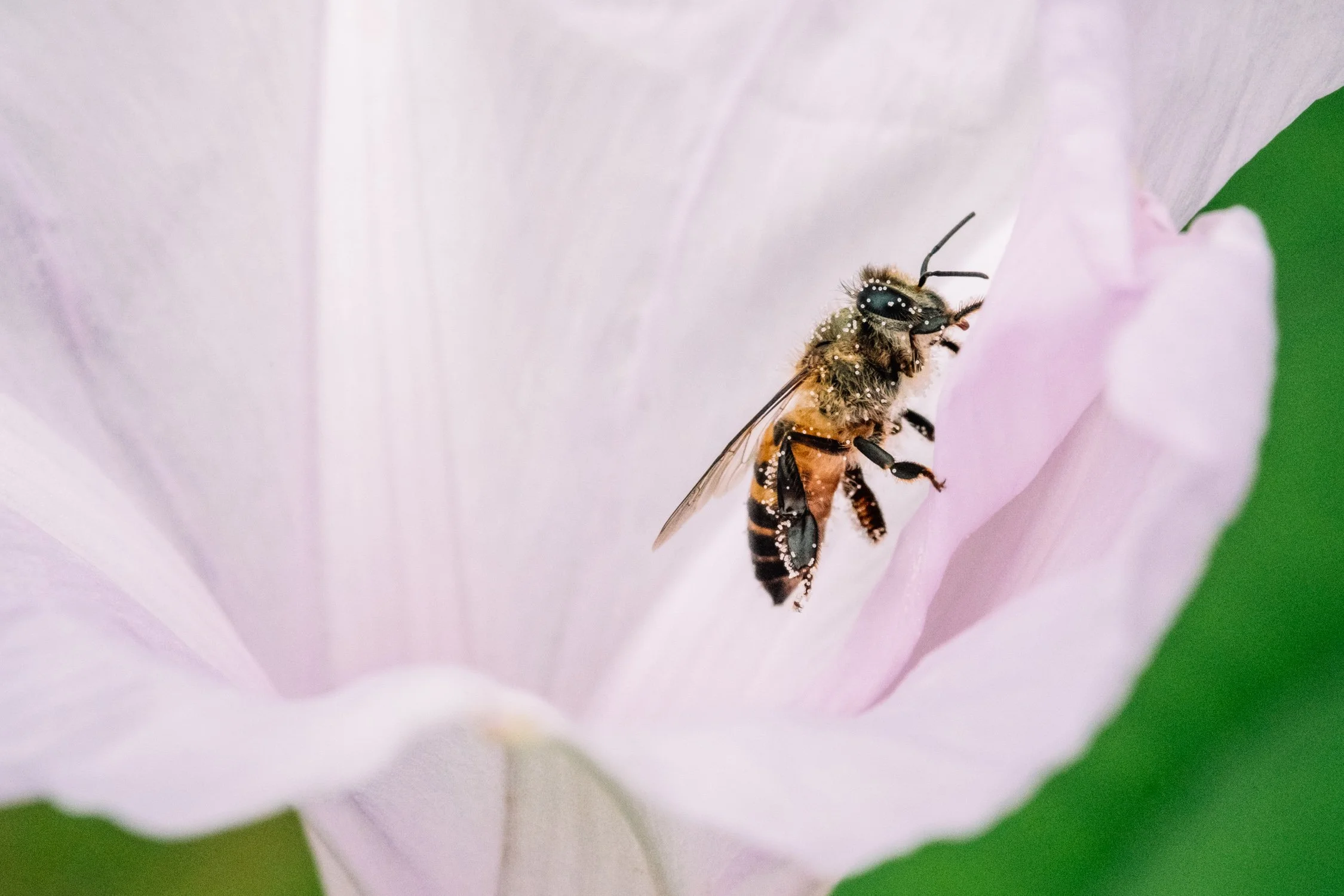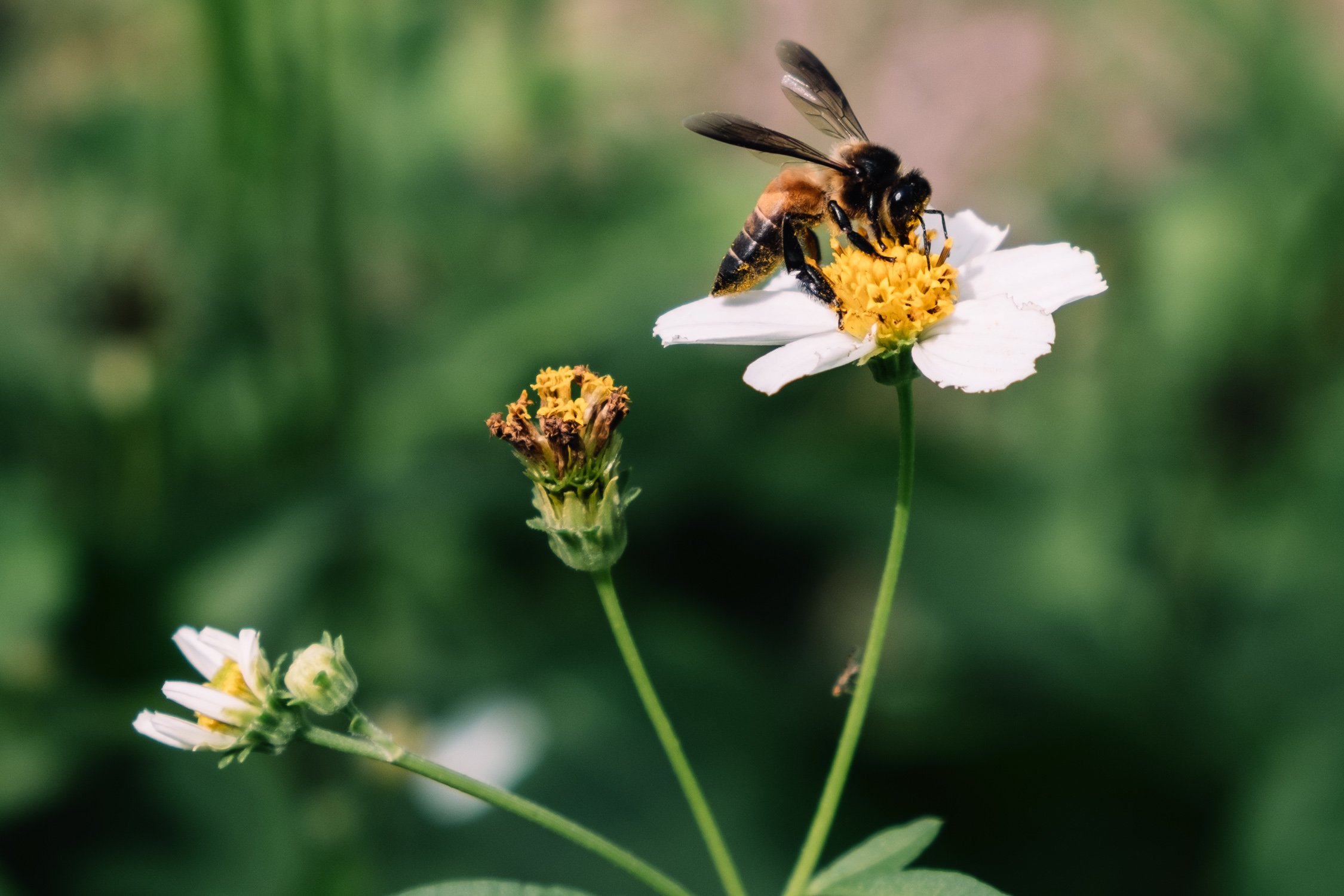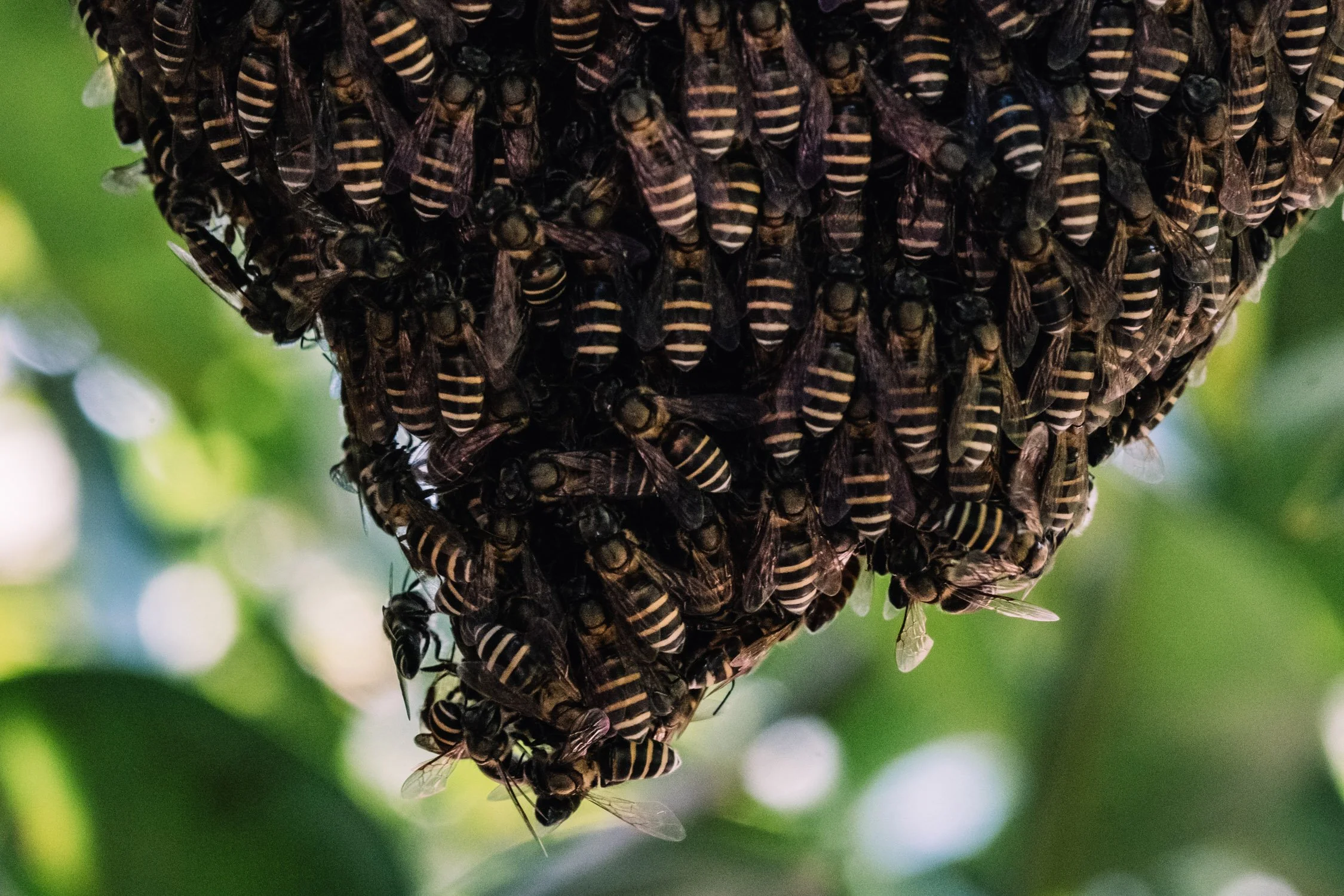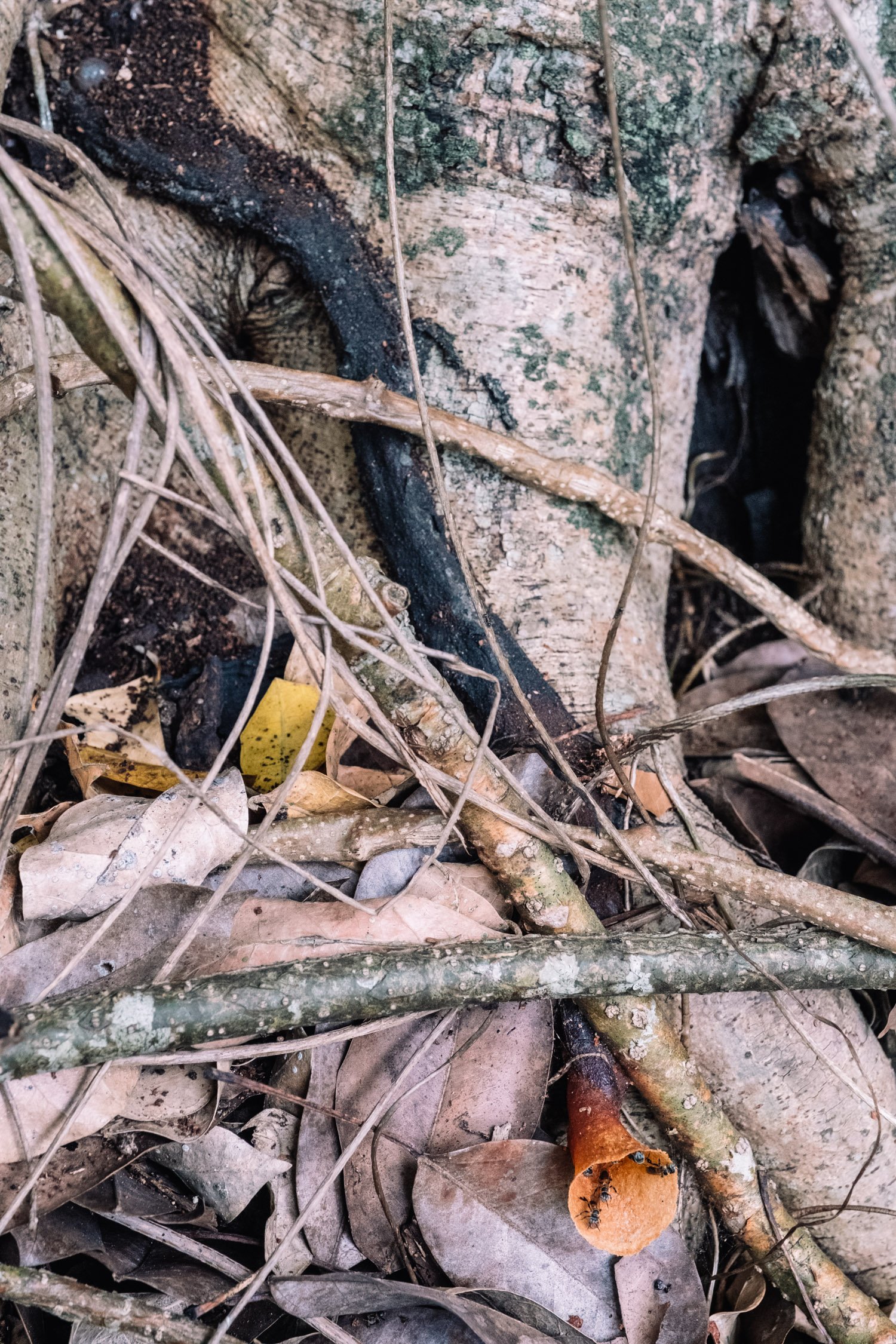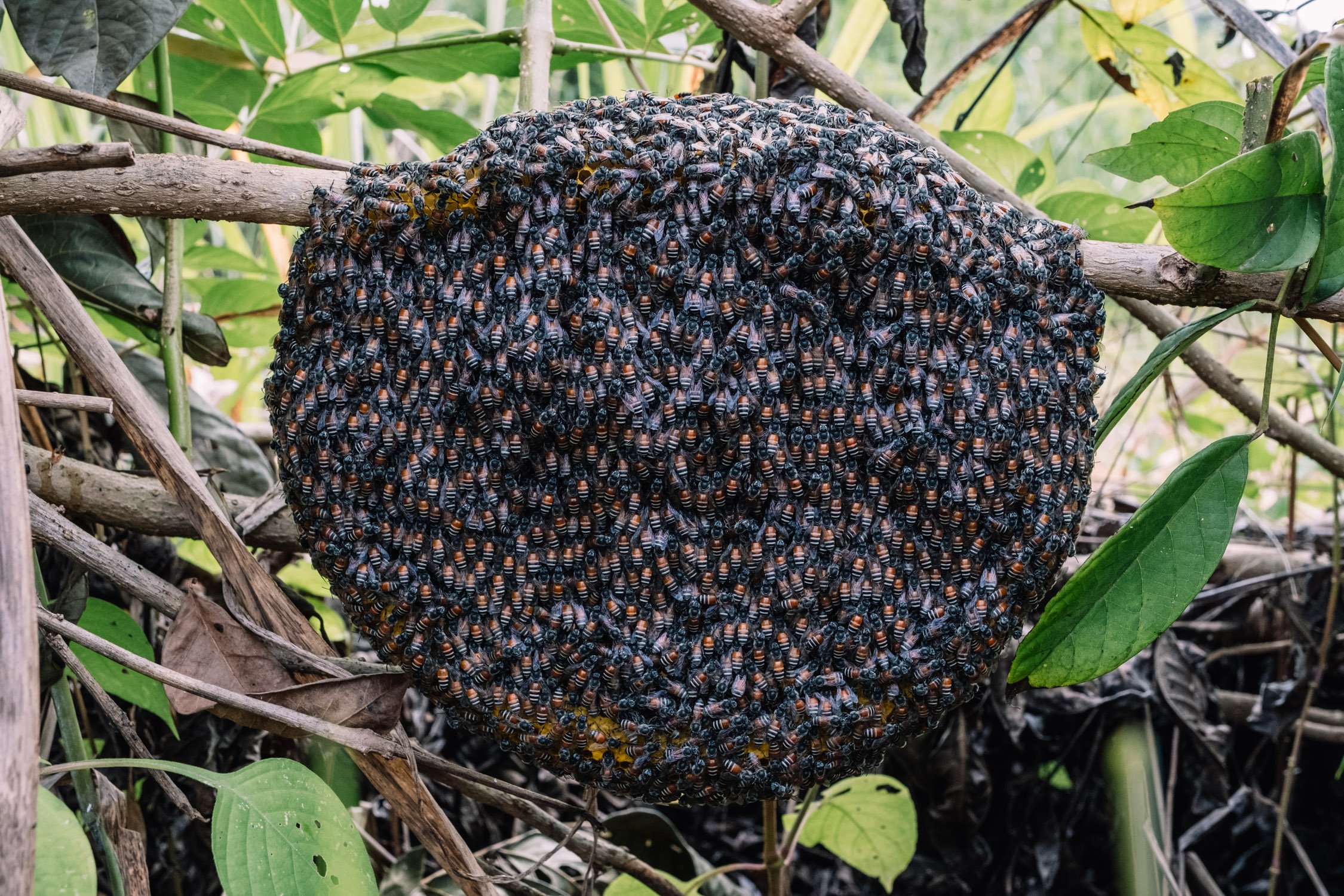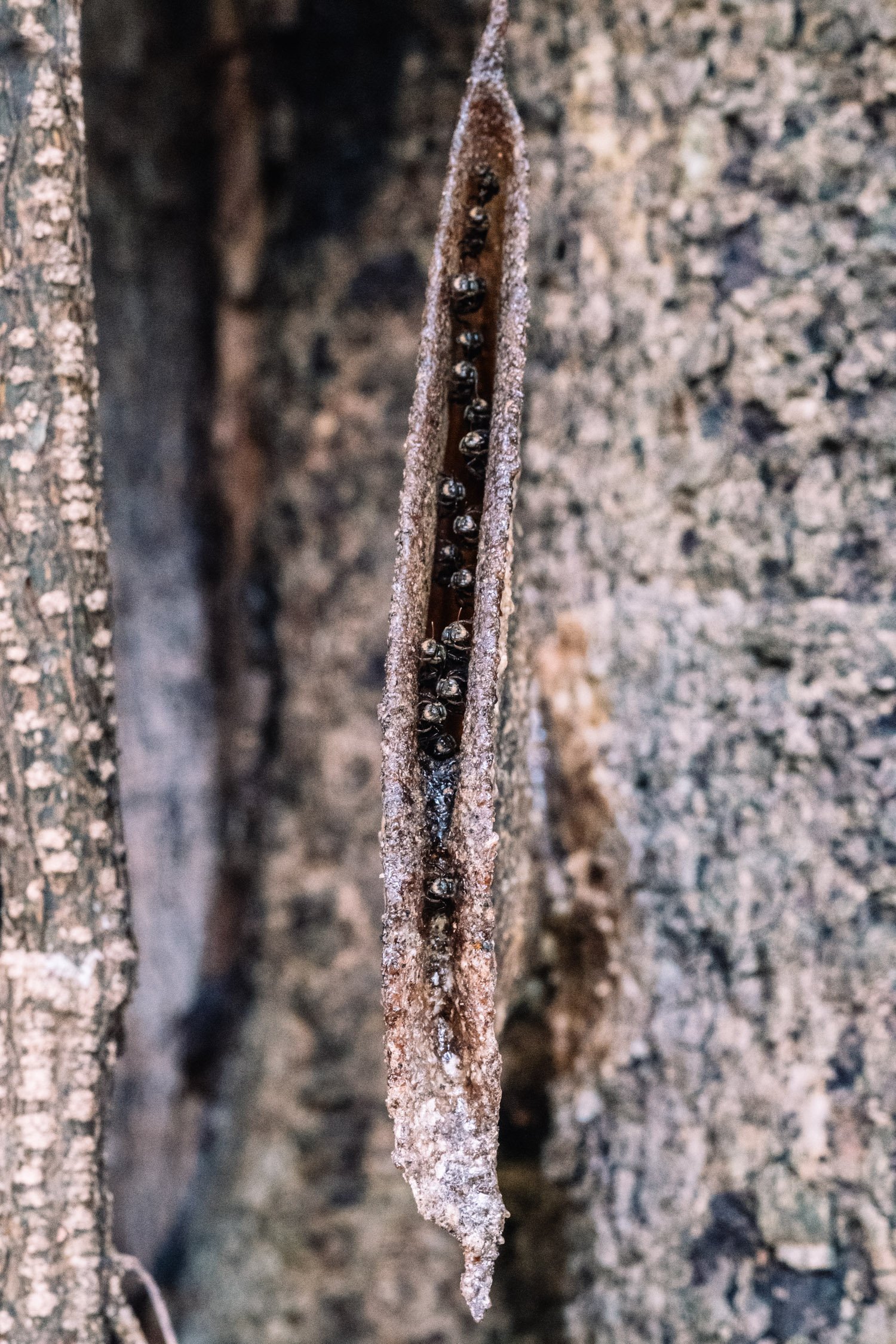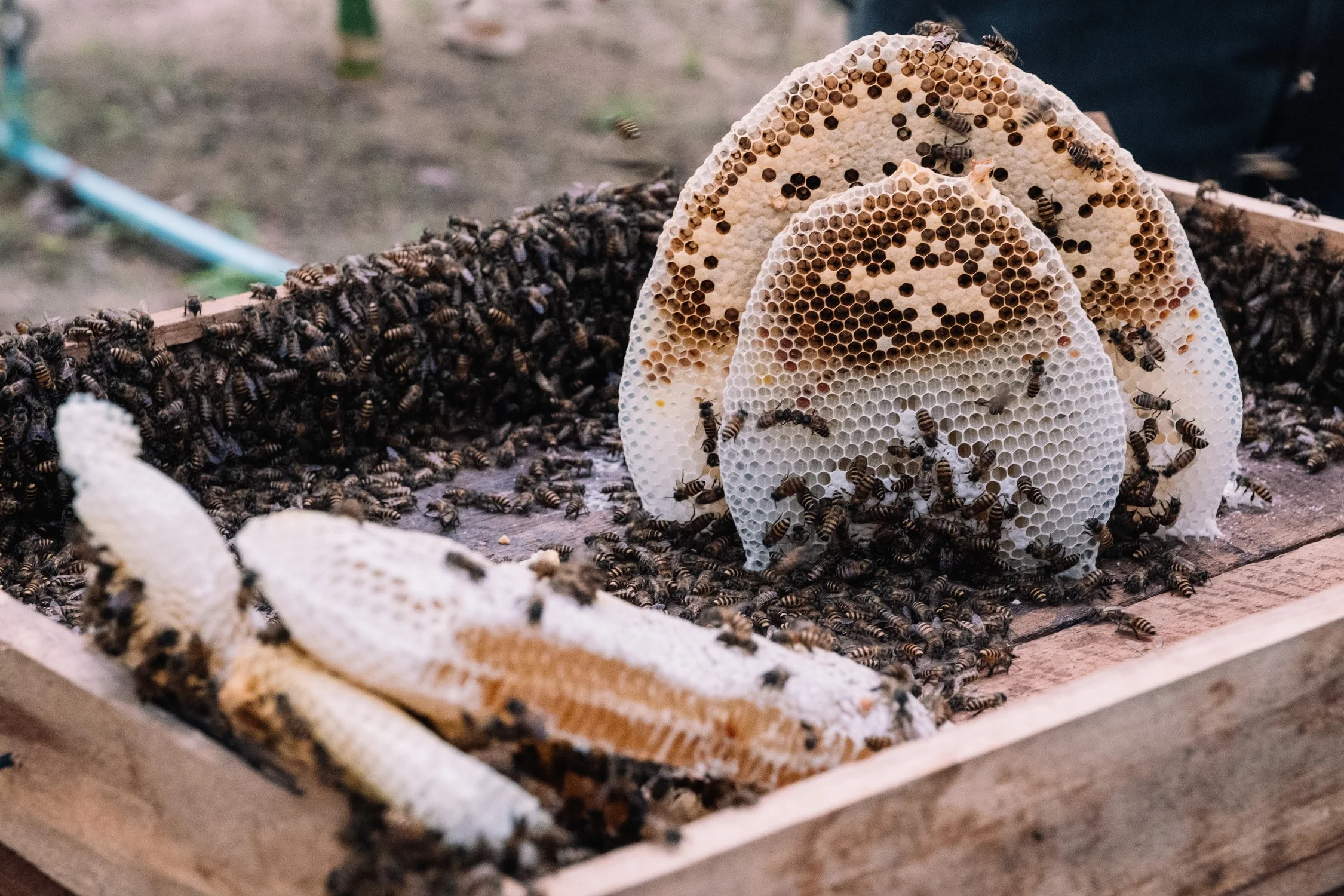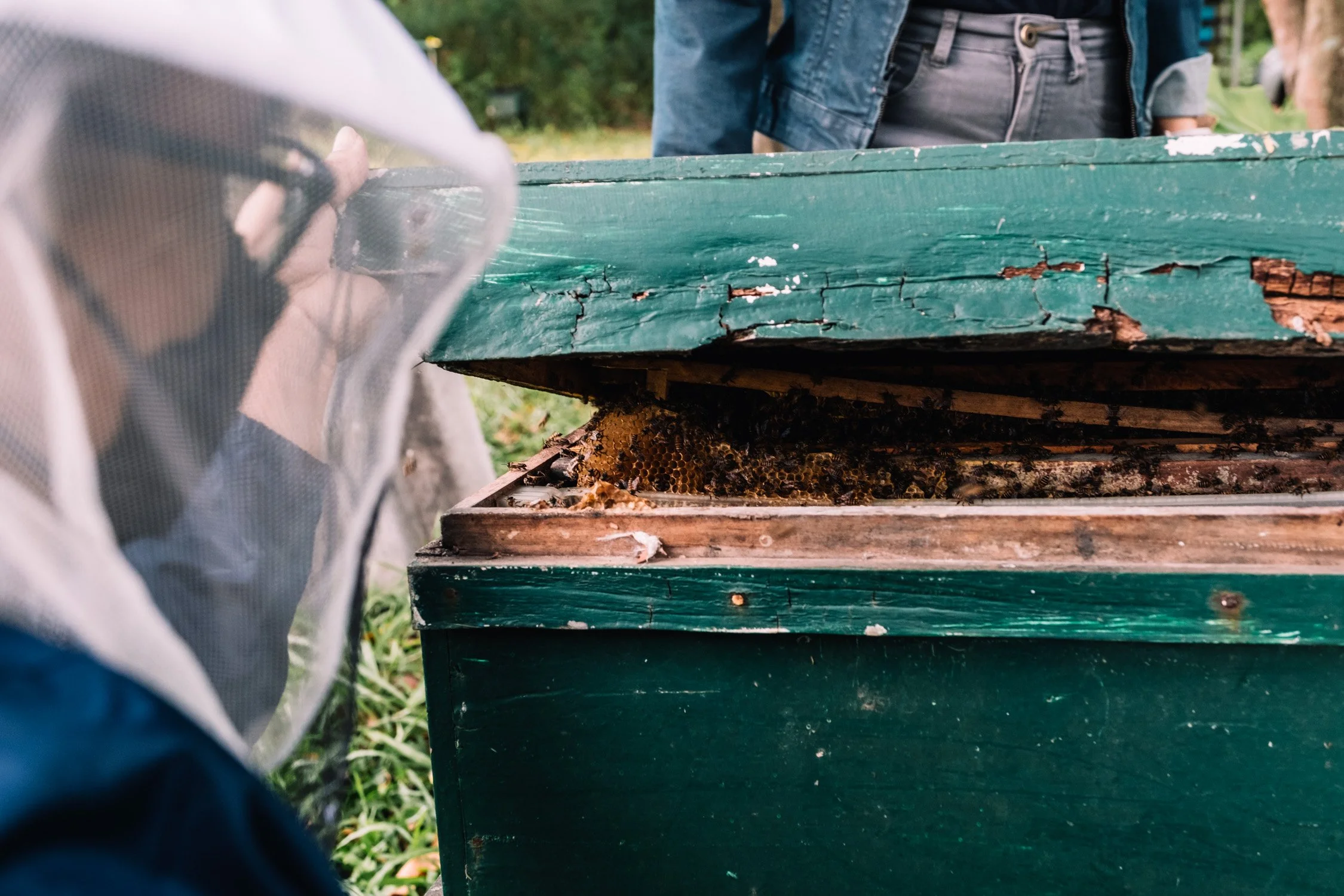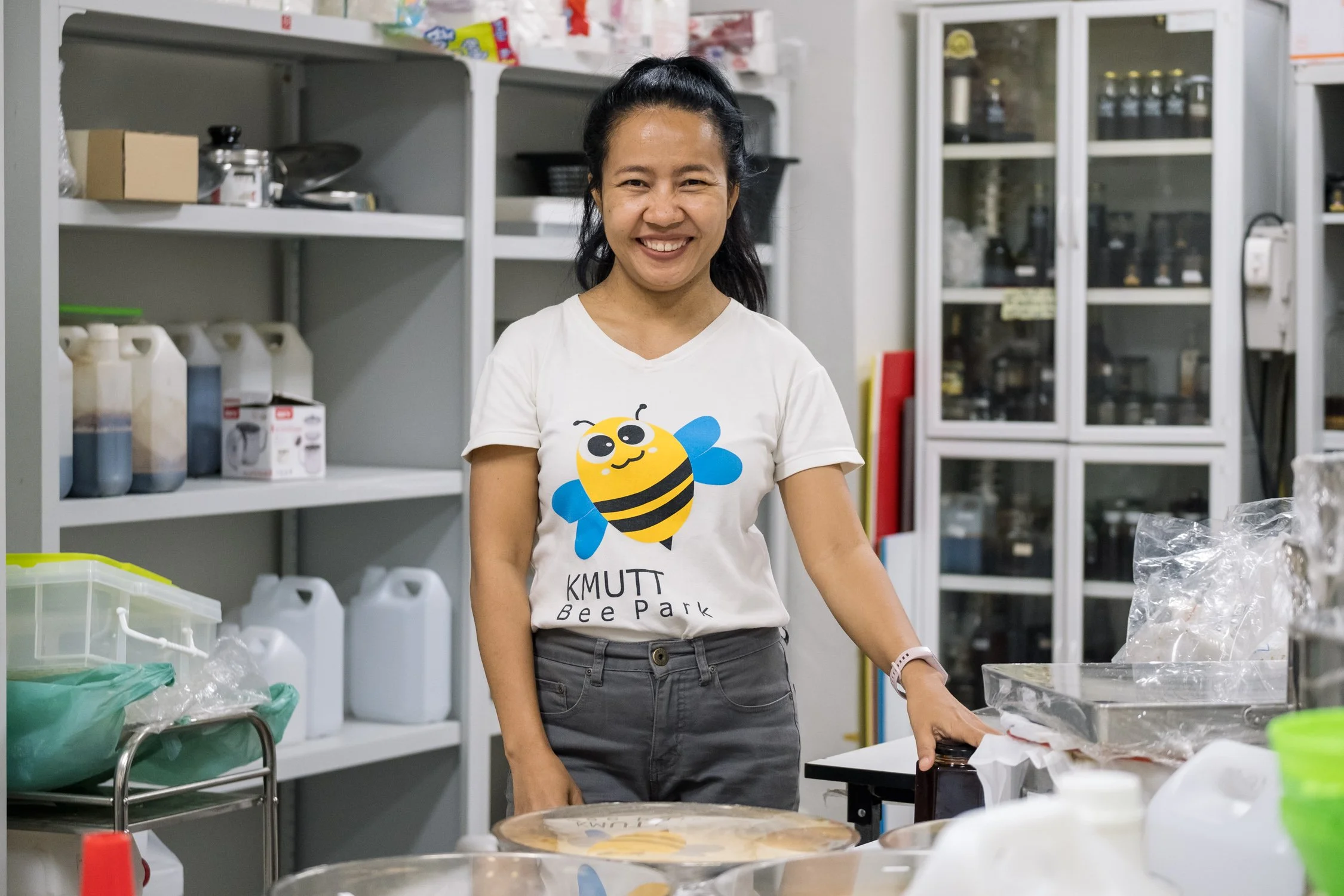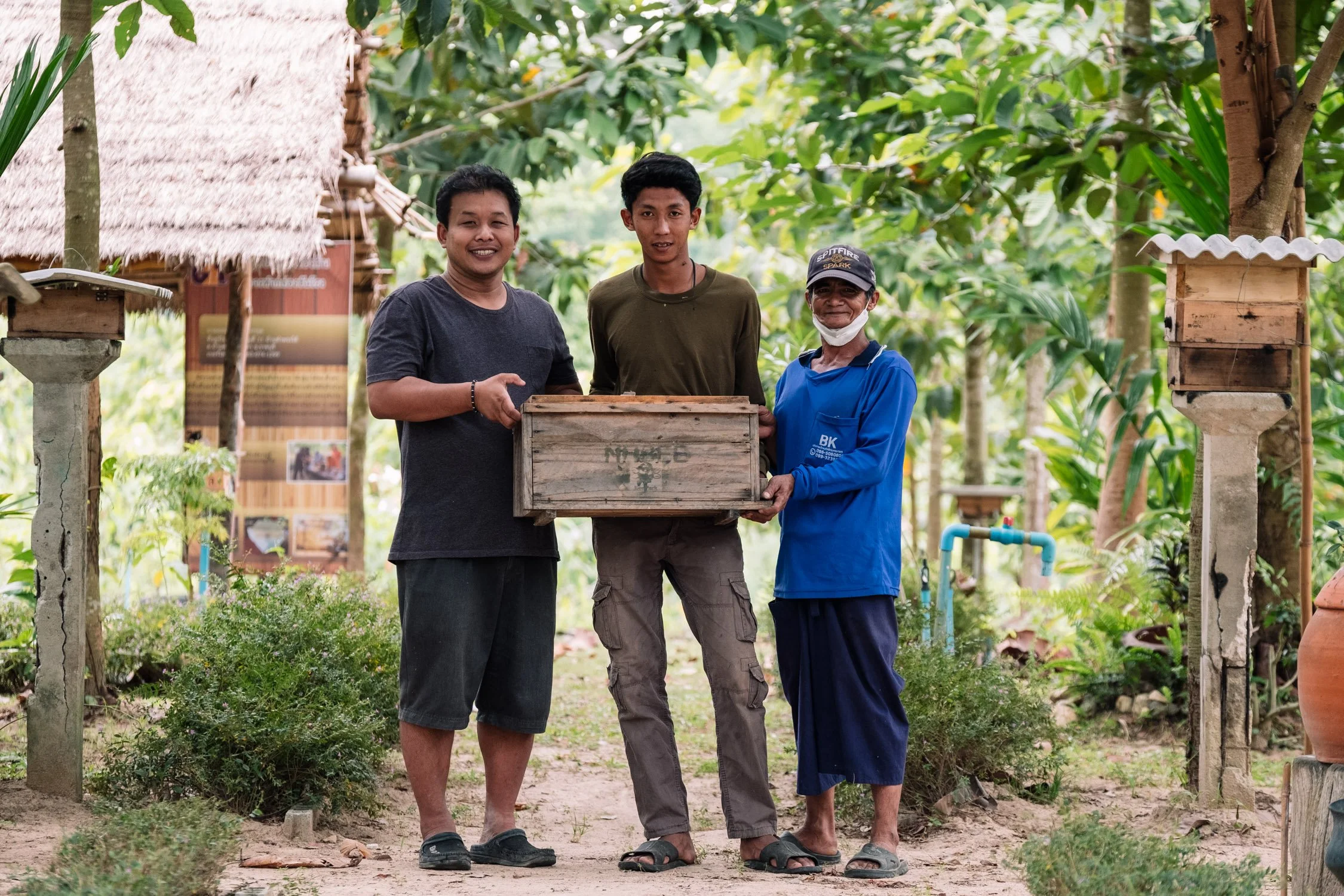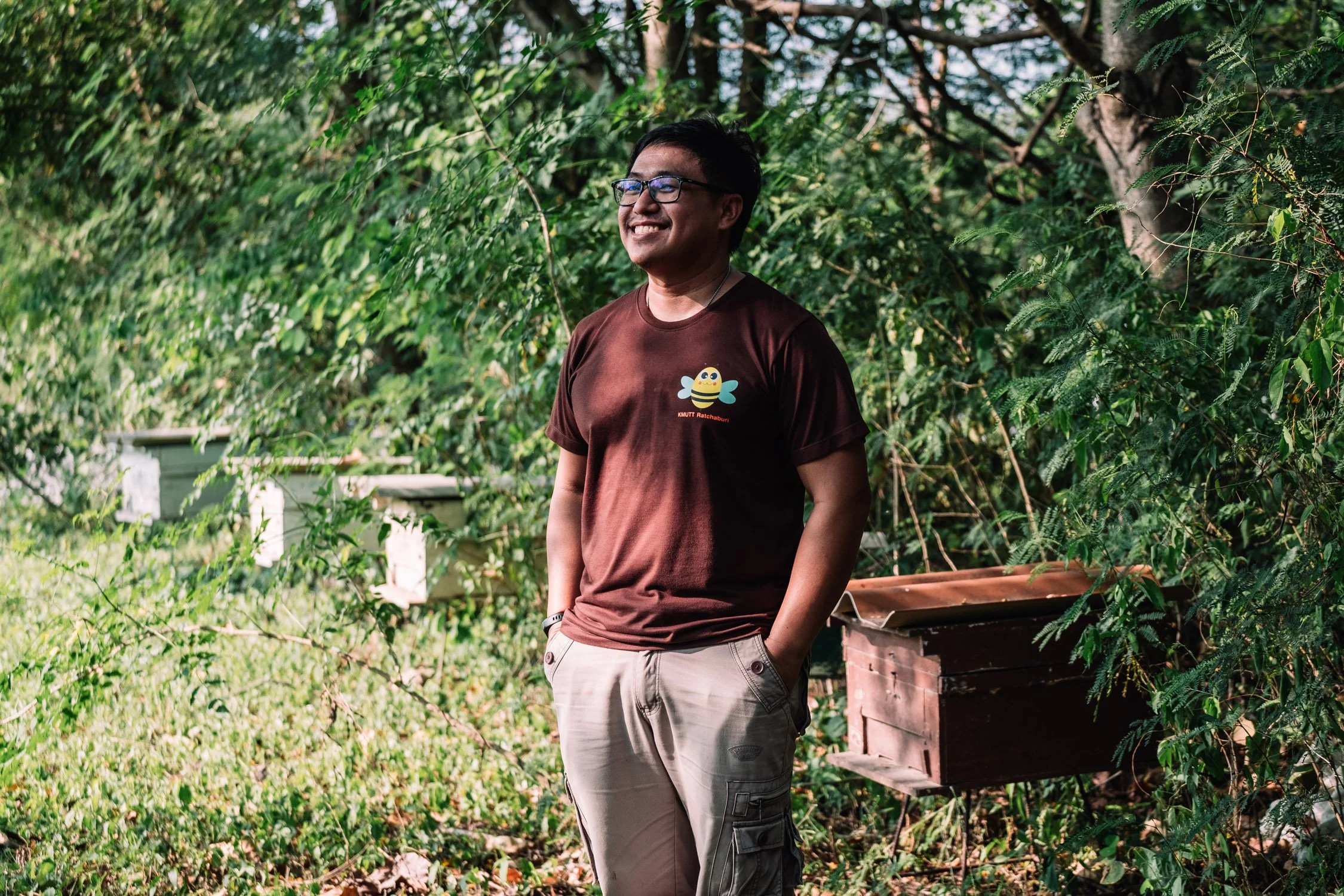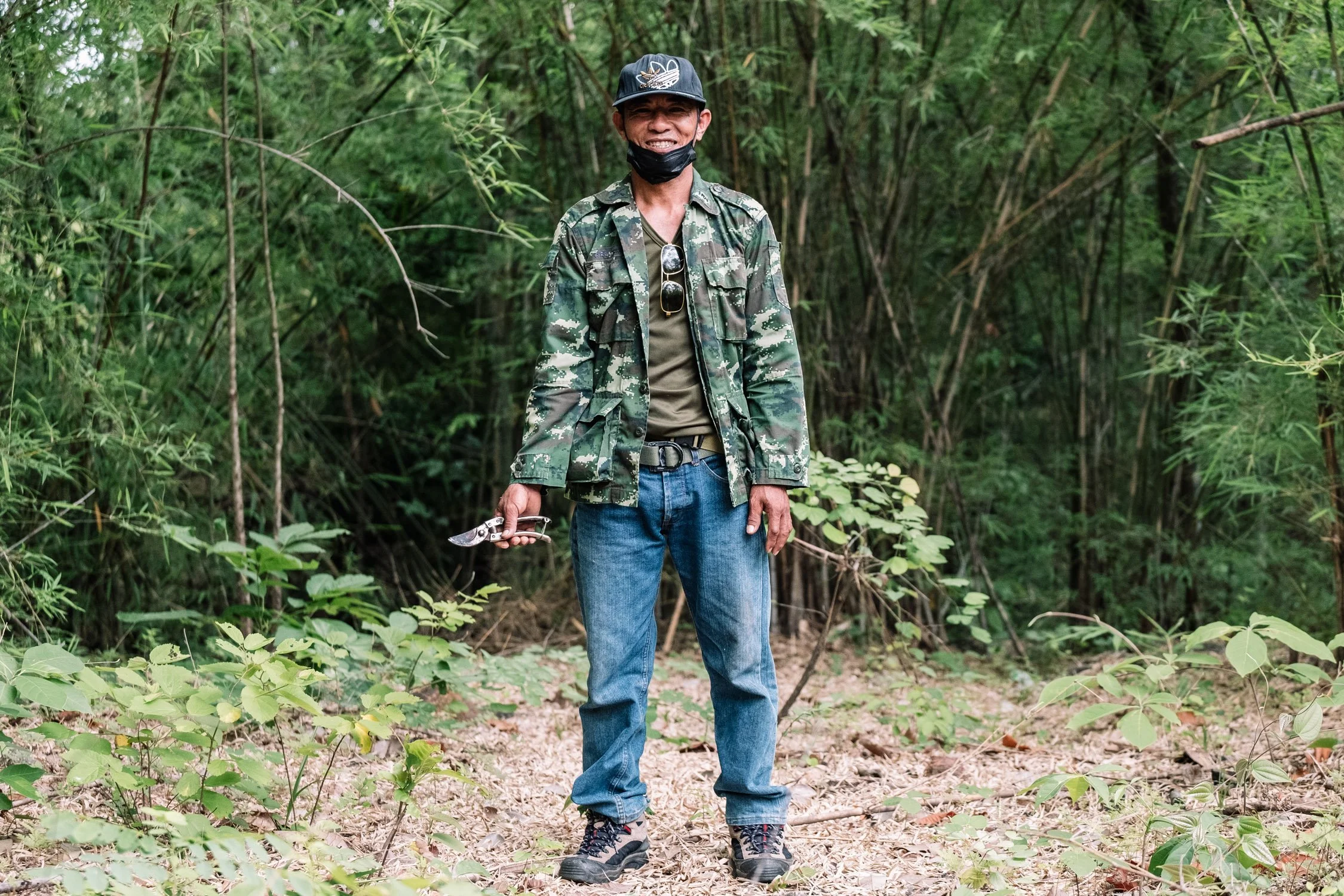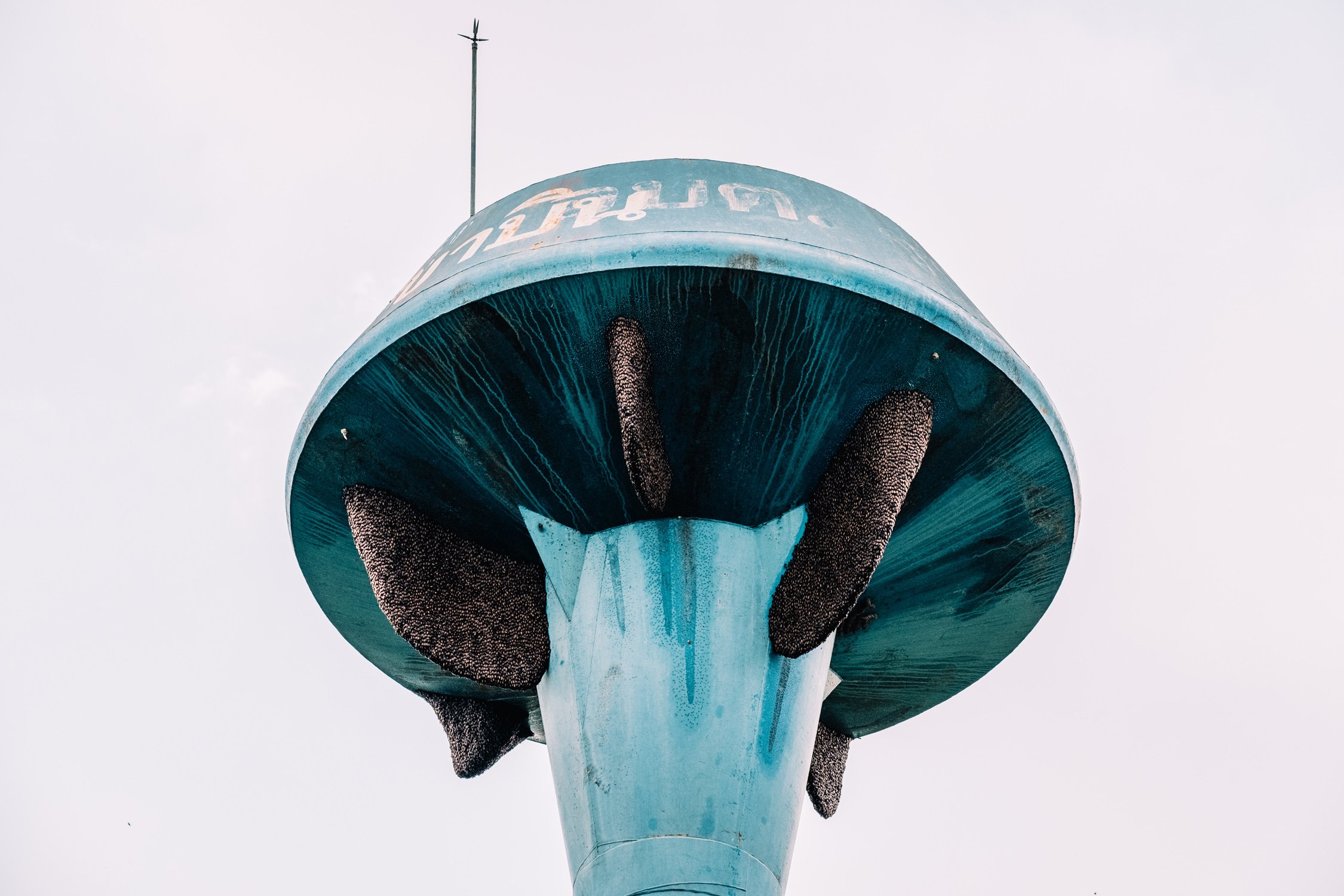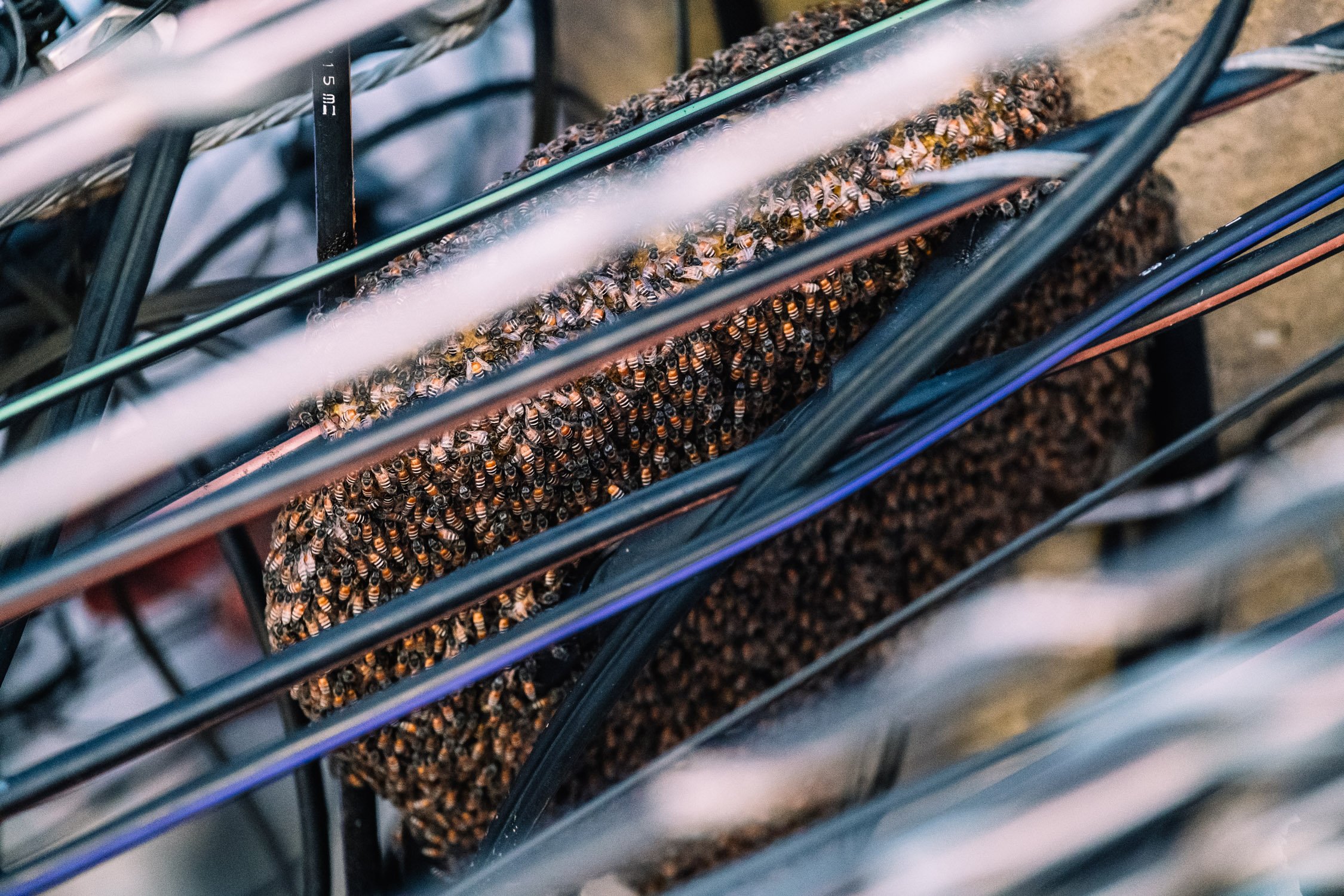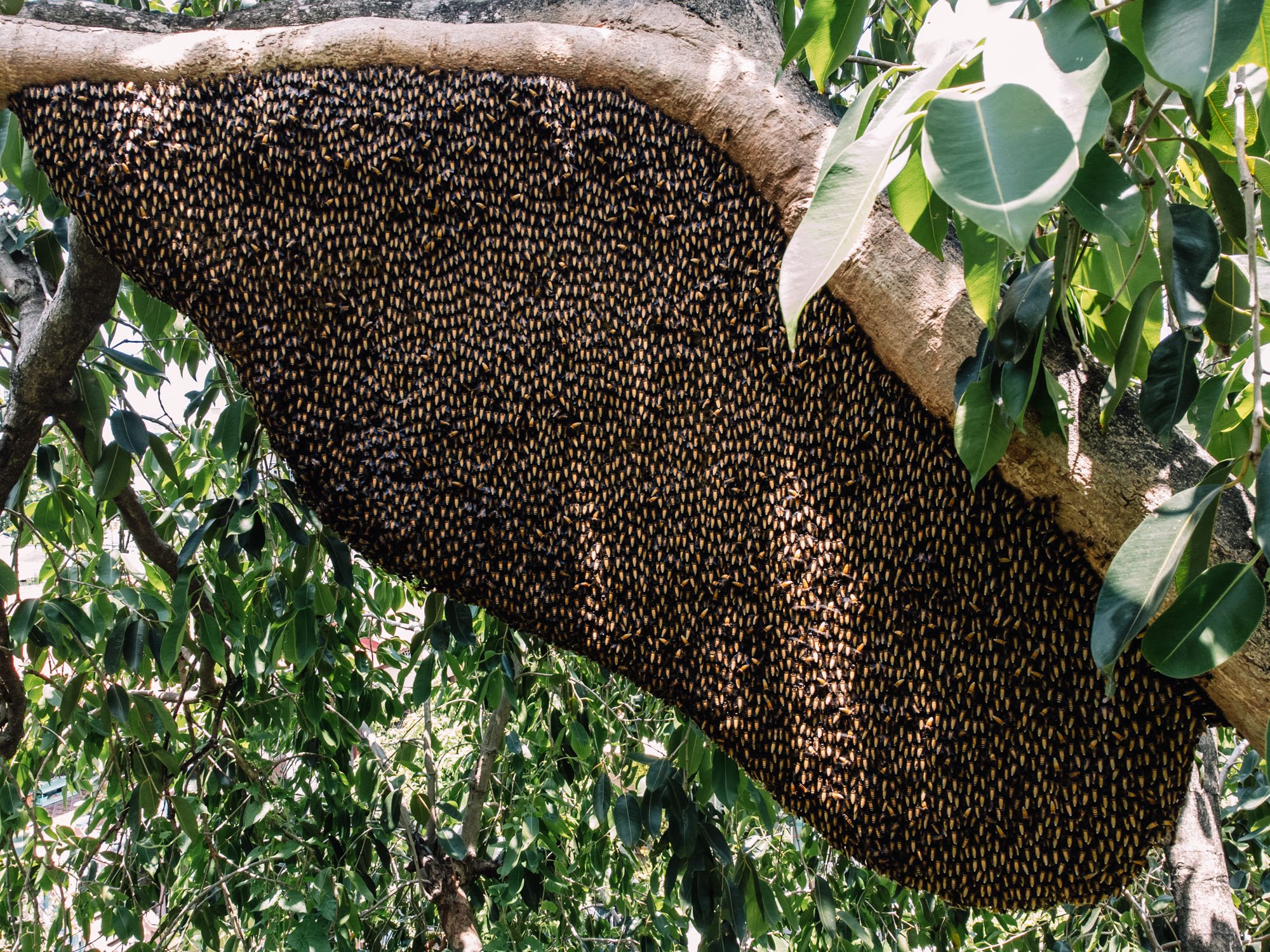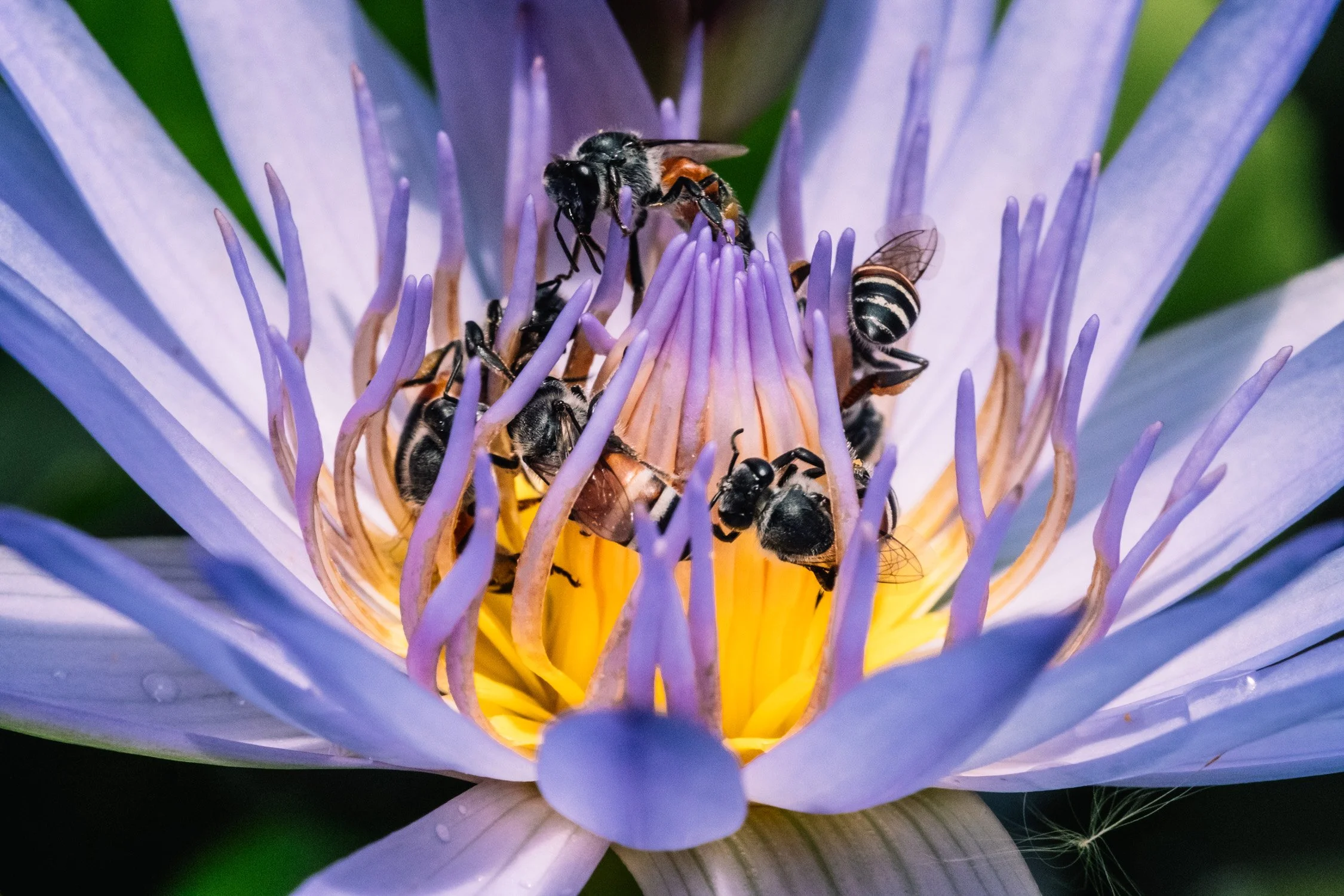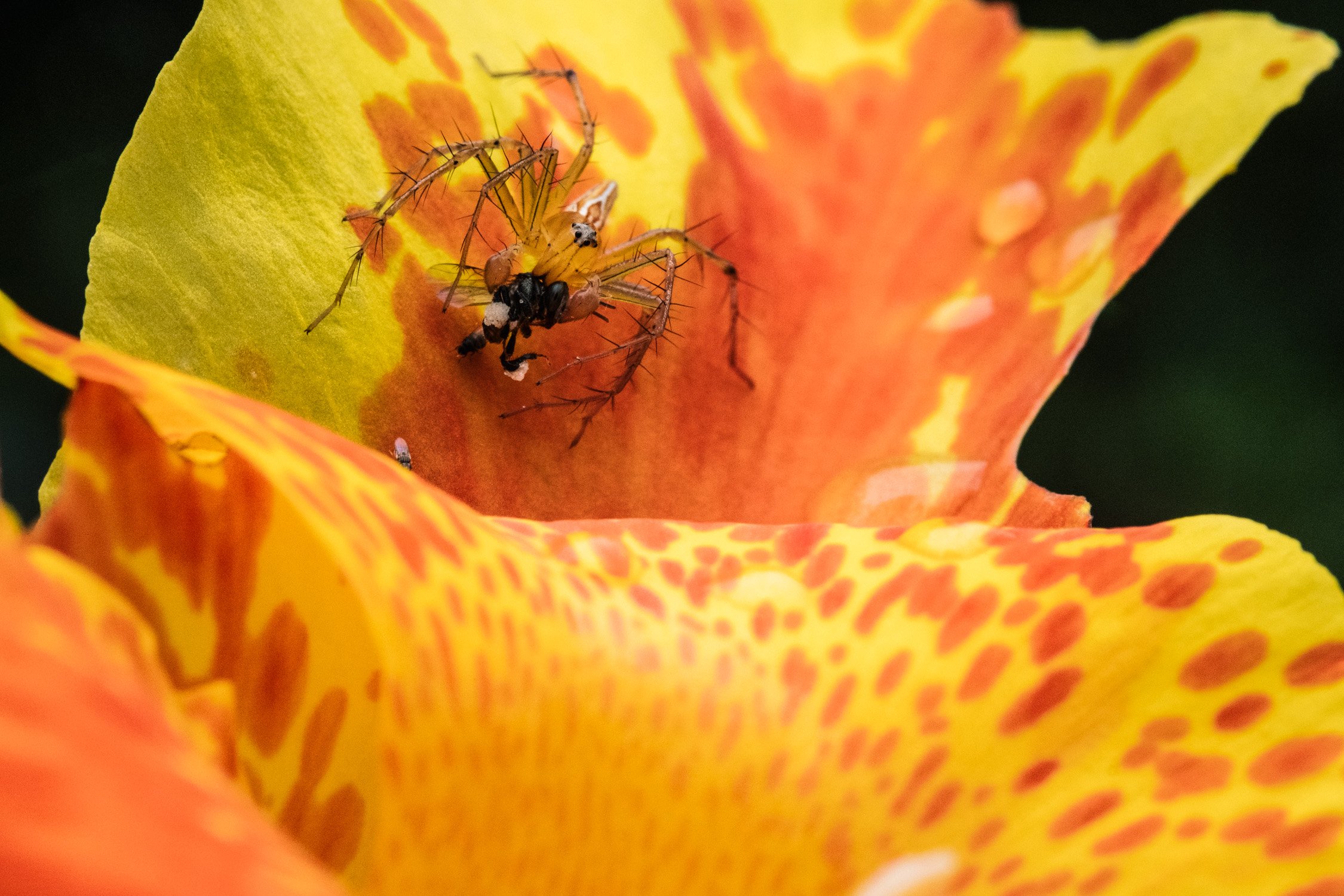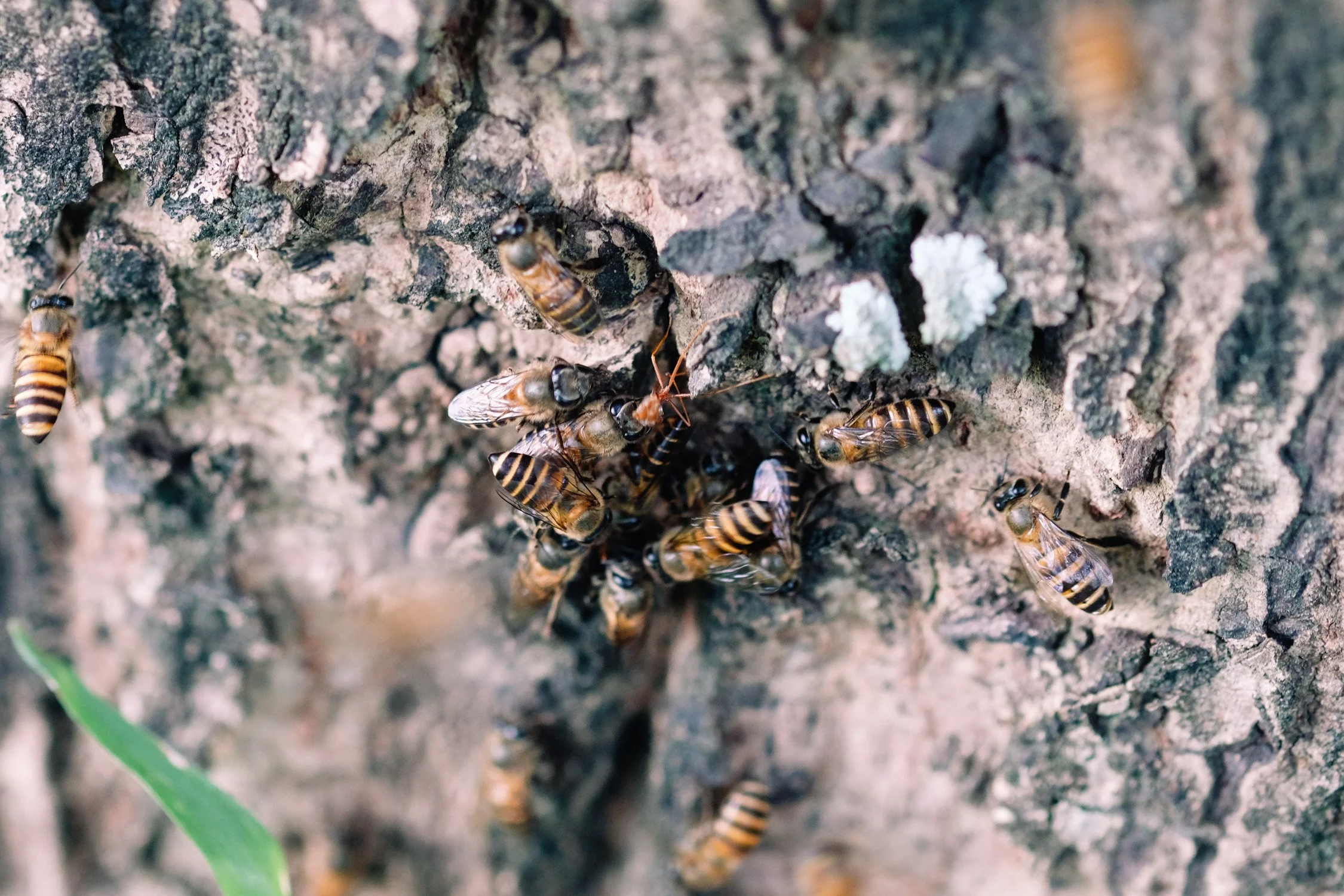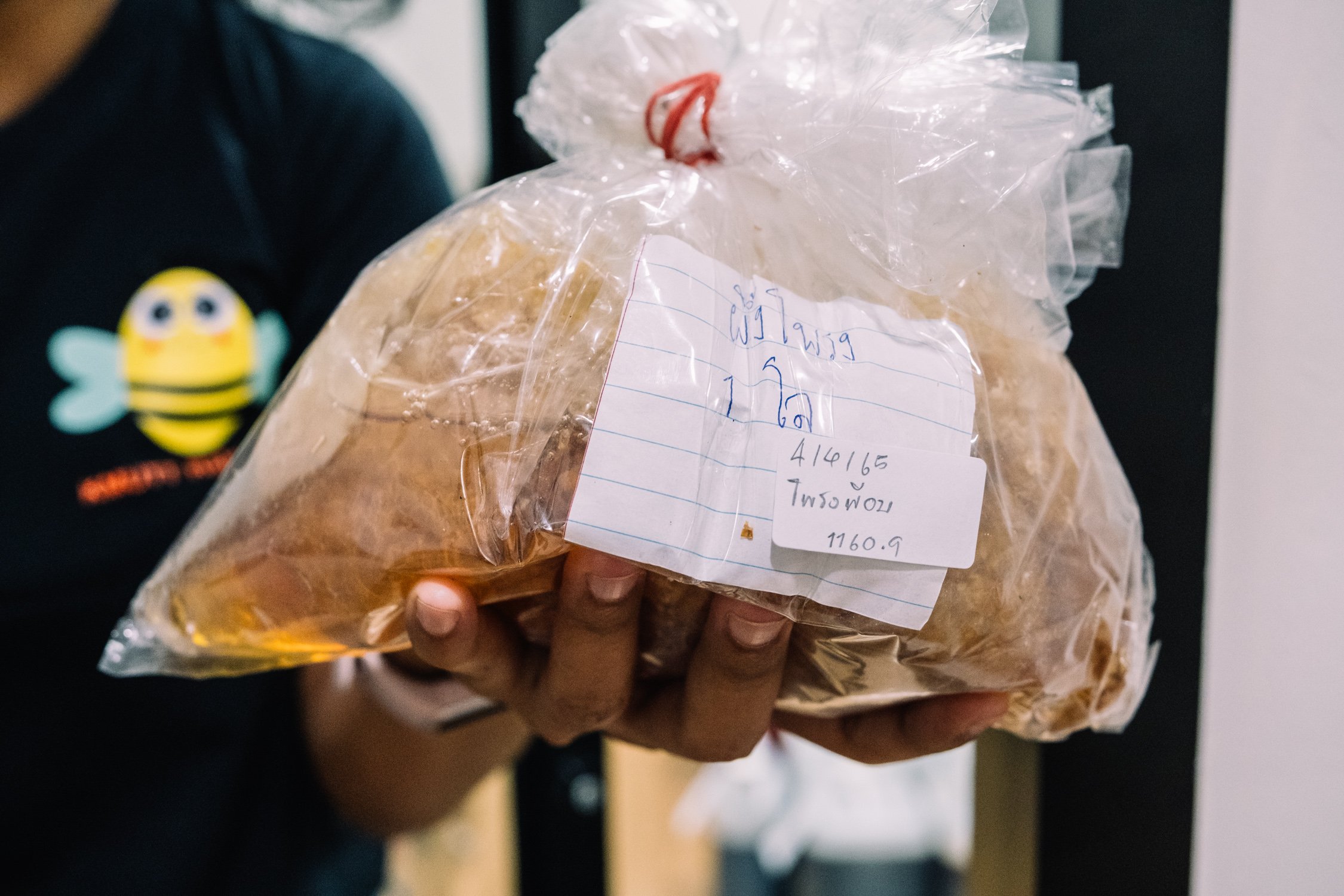LAND OF THE BEE
This ongoing photoseries looks at bees and pollinators across Thailand, covering academic research and commercial ventures, conservation and native beekeeping, and urban adaptation and traditional wild honey hunters. The journey is just beginning - stay tuned as photos are added and information updated (or send me an email if you’d like to contribute!)
BEES OF THAILAND
There are four native species of honeybee (Apis dorsata, Apis cerana, Apis florea, and Apis andreniformis) and one native species of stingless bee (Apidae meliponini) in Thailand, with the imported Western honeybee (Apis mellifera) used for most commerical honey production.
WILD BEEHIVES
Wild hives can be found across Thailand, with each genus preferring different environments. The giant honeybee, Apis dorsata, prefers to be high up and away from threats. The Eastern honeybee, Apis cerana, is extremely adaptable and can be found everywhere, from trees to bushes and undergrowth to urban settings, as can the red dwarf honeybee, Apis florea. The black dwarf honeybee is the least common of the four native species, and accordingly the hardest to find.
The tree the Apis dorsata hives in the first photo are on has been blessed by an influential local monk; this means the tree cannot be used for harvesting and the bees will remain undisturbed. Apis dorsata, or the Giant Honey Bee, is the largest native honeybee species in Thailand, at an average bee size of 17-20mm. They are a highly defensive species that likes to reside in high places such as trees or cliffs to deter predators. Harvesting the honey is an arduous process, that must take place at night with little or no light to minimise potential aggression. Honey hunters will even delay a harvest to avoid the light of the full moon! It’s worth it though - a hunter can harvest an average of 10kg of honey from a single small hive.
BEEKEEPING
Beekeeping in Thailand is broadly divided into three areas: large scale commercial honey production using the Western honeybee, Apis Mellifera, small-scale commercial and residential beekeeping using native bee species, and wild honey hunters and harvesters.
Keen bees
Dr Orawan, of King Mongkot University’s KMUTT Bee Park in Ratchaburi, is the preminient expert on native bee species in Thailand. With her small but expanding team in Ratchaburi they conduct research, promote native beekeeping as an alternative and inclusive economic opportunity, and quest to educate and expand knowledge on Thailand’s native bee species.
WILD HONEY HUNTERS
URBAN ADAPTATION
Bees in Thailand have learnt to adapt. Bangkok boasts much greater bee diversity and presence in a heavily urbanised area than one would expect - from the giant honeybee to the stingless bee. Elsewhere, bees have learnt to adapt and thrive in new environments such as the water tower shown above.
NATURAL THREATS AND PREDATORS
Bees worldwide are under threat, although species in Thailand appear to be doing better than in many countries, with an estimated 330,000 hives in-country. Nonetheless, all species of bees face a variety of threat, from traditional natural predators like spiders and ants, to human interference, poorly-managed honey hunting, and habitat loss.
